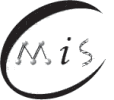DFG Research
Group 522
| Architecture of nano- and microdimensional building blocks |
 |

a joint project of

Publications
|
 |
Internal |

Speaker
Prof. Dr. M. Grundmann
Abt. Halbleiterphysik
Felix-Bloch-Institut für Festkörperphysik
Fakultät für Physik und Erdsystemwissenschaften
Universität Leipzig

Concept
Future applications in nanomechanics, sensorics, photonics and electronics require a novel kind of architecture von micro- and nanostructures. These structures shall fully use the three-dimensional space, first as single elements, later also as networks. New degrees of design freedom become possible with regard to strain management and interconnectivity. This approach is followed for the fabrication of nanowires and microcolumns, spirals, scrolls, cylinders or similar structures. Their novel functionality makes them elementary building blocks for the above mentioned applications.
The structures envisioned by us are constructed in free space. They shall be fabricated with minimum use of patterning technology, employing the principles of self-assembly and directed self-assembly. This bottum-up approach allows us to create novel structures which cannot be created by top-down technology, e.g. spirals and structures with extreme aspect ratio.
Our structures are fundamentally different from nanoparticles, clusters, mesoscopic inhomogeneities, nanostructures embedded in a planar matrix (quantum dots) or a liquid (colloidal quantum dots) , which are currently under intense investigation. The complex, three-dimensional design of our building blocks can contain curvatures and leads to properties which cannot achieved any other way. The size scale of the structures depends on the physical properties such as electron or photon confinement or phase stability.

Projects (2006-2009)
| Nummer | Projektleiter |
Titel |
| P1 |
M. Grundmann1, M. Lorenz1 | One-dimensional heterostructures and nano-forests |
| P2 |
V. Gottschalch2 | „One-dimensional“ AIIIBV nanostructures |
| P3 |
E. Schubert3, B. Rauschenbach1,3 | Constructive fabrication of three-dimensional, periodic structures using ion-beam-assisted deposition |
| P4 |
K. Bente4 | Cylindrical-lamellar microstructures and the relations of structure and properties of cylindrite |
| P5 |
B. Rheinländer1, V. Gottschalch2, M. Grundmann1 |
Optical resonances in micro- and nanocylinders |
| P9 |
S. Müller5 | Effective theories for atomically thin tubes and layers |
| P10 |
K. Nielsch6, K. Bente4 | Synthesis and characterization of thermoelectric multilayer-nanowires of Pb-Bi-(S, Se,Te)-compounds |
| P11 |
Th. Höche3, J.W. Gerlach3 | Fabrication of nanostructures by diffraction-mask projection laser-ablation |
1 Universität Leipzig, Fakultät für Physik und Erdsystemwissenschaften, Felix-Bloch-Institut für Festkörperphysik
2 Universität Leipzig, Fakultät für Chemie und Mineralogie, Institut für Anorganische Chemie
3 Leibniz-Institut für Oberflächenmodifizierung e.V., Leipzig
4 Universität Leipzig, Fakultät für Chemie und Mineralogie, Institut f. Mineralogie, Kristallographie und Materialwissenschaften
5 Max-Planck-Institut für Mathematik in den Naturwissenschaften, Leipzig
6 Max-Planck-Institut für Mikrostrukturphysik, Halle/S
M. Grundmann
2.8.2006






